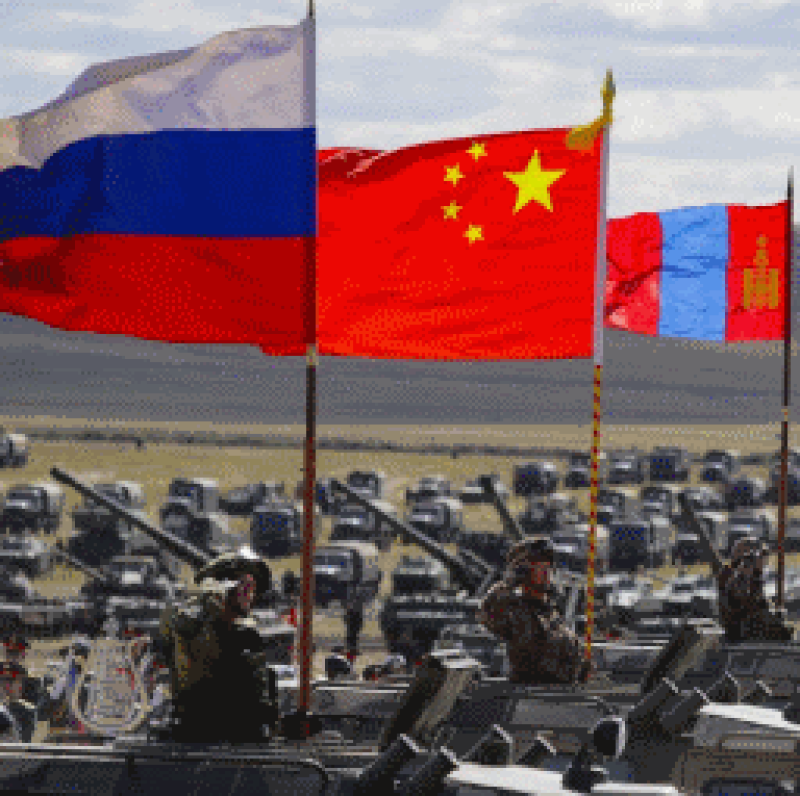The headline figures for Russia’s Vostok (or “East”) military exercises, which began yesterday , are dramatic: 300,000 soldiers, 36,000 tanks and other vehicles, 80 ships, and 1,000 aircraft operating across more than half the country. That’s double the size of the British armed forces. It’s also twice the size of the last Vostok war games, held back in 2014. As if that weren’t enough, some 3,200 Chinese troops and 30 aircraft are also involved, along with a small Mongolian force.
Vostok will take the form of a week-long clash between two sides, fought on land, in the air, and in the waters off the Russian Far East. The drills will include staging parachute jumps, conducting “anti-terrorist operations,” and shooting down cruise missiles. The exercise will conclude with a review of the forces in the field, a photo opportunity featuring row upon row of tanks, troops, and miscellaneous hardware. In a way, that’s the whole point. Vostok is not just a big military-training drill—it’s a massive psychological-warfare operation and a geopolitical gambit, being undertaken by Russia as it regains much of its martial mojo and its ability to mount and coordinate complex operations.
That said, there’s a difference between showing off your hardware and testing your new tactics, and actually going to war. We shouldn’t assume that Russia actually wants to fight some major conflict. If nothing else, while Vostok’s scale shows that Moscow has regained the capacity for a continental-scale operation, it could hardly afford to fight one for real. It would have a hard time mustering this kind of army during wartime, when railway lines and communication hubs would be primary targets.
This exercise is part of what I have called “ heavy-metal diplomacy ”: Russia’s use of its military to overawe and misdirect the West. We’ve seen this kind of undiplomatic diplomacy at work in Europe, where Moscow has responded to debates in Sweden and Finland about joining NATO with war games simulating Russian invasions. We also see this sort of diplomacy at work in the numbers game Vladimir Putin plays. In last year’s Zapad war games, Moscow lowballed the number of soldiers participating in order to keep it below the ceiling at which Western countries would be able to send inspectors under Organization for Security and Cooperation in Europe rules. This time around, the Russians seem happy to play up those numbers. But the much-hyped 300,000 figure involves much false accounting—in practice, the real figure may well be closer to 150,000 , which is admittedly still an impressive tally. Judging from past examples like Zapad, many of these soldiers are unlikely to leave their barracks. They’ll be “involved” in exercises at the command post, not ones out in the field.
More to the point, as the defense analyst Michael Kofman has noted : If even, say, only one regiment of a brigade is actually involved in Vostok, then Russia will include the entire brigade in its tally. This helps explain how the Russian army was able to reassure a population angry over proposed pension-age hikes that no extra money would be spent on the war games. Moving what amounts to a third of the entire Russian armed forces around Siberia and the Russian Far East isn’t cheap.








Russia has the 12th largest GDP, and the 48th per capita.
It has natural gas and nukes.